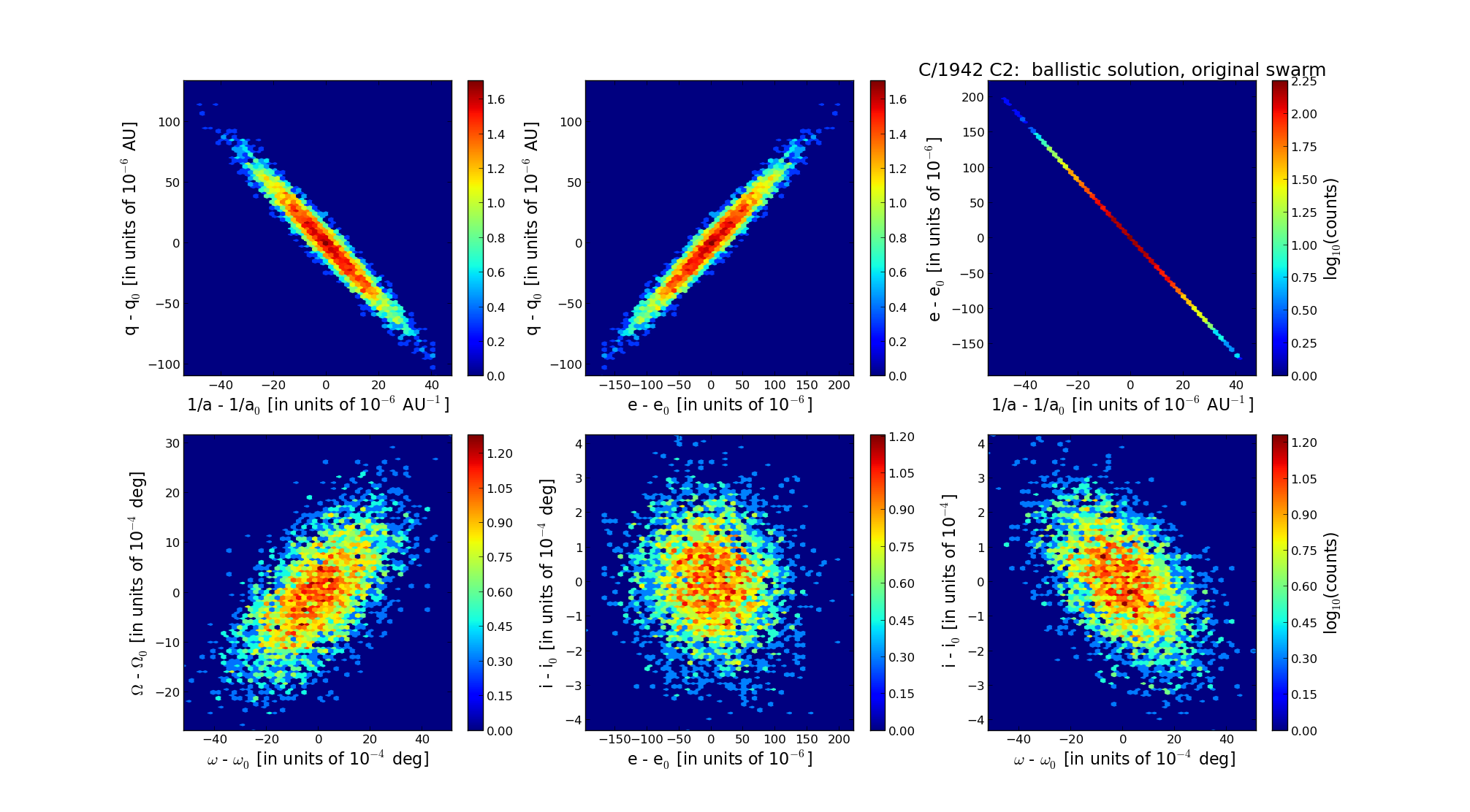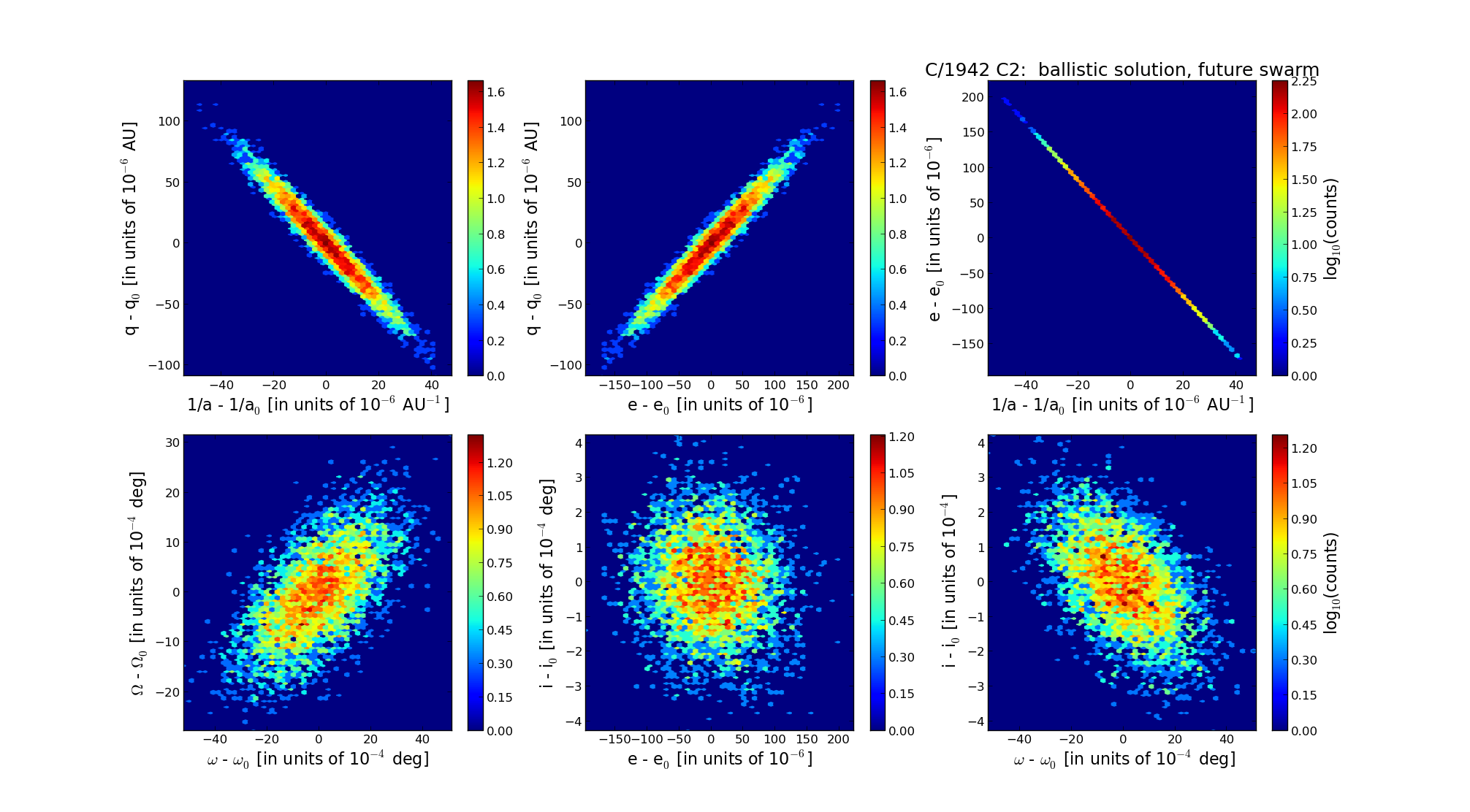| Solar System Dynamics & Planetology Group |
 |
C/1942 C2 Oterma |  |
| Solar System Dynamics & Planetology Group |
 |
C/1942 C2 Oterma |  |
| number of observations | 47 |
| number of residuals | 88 |
| data interval | 1942 Feb. 12 — 1943 Mar. 11 |
| rms [arcsec] | 1.57 |
| orbit quality class | 1b |
| Epoch (TT) | 19421008.0 | = JD 2430640.5 |
| time of perihelion passage (TT) | 19420927.280025 | ± 0.007703 |
| perihelion distance | 4.11339144 | ± 0.00003196 |
| eccentricity | 1.00316671 | ± 0.00005609 |
| argument of perihelion [deg] | 163.620216 | ± 0.001441 |
| longitude of the ascending node [deg] | 281.038570 | ± 0.000853 |
| inclination [deg] | 172.514474 | ± 0.000124 |
| inverse semimajor axis [10-6 au-1] | -769.85 | ± 13.62 |

| Epoch (TT) | 16390708 | |
| time of perihelion passage (TT) | 19420928.842884 | ± 0.007726 |
| perihelion distance | 4.10696133 | ± 0.00003147 |
| eccentricity | 1.00011952 | ± 0.00005530 |
| argument of perihelion [deg] | 163.752994 | ± 0.001446 |
| longitude of the ascending node [deg] | 281.002773 | ± 0.000850 |
| inclination [deg] | 172.517772 | ± 0.000123 |
| inverse semimajor axis [10-6 au-1] | -29.10 | ± 13.47 |

| Epoch (TT) | 22430304 | |
| time of perihelion passage (TT) | 19420925.248677 | ± 0.007698 |
| perihelion distance | 4.10166979 | ± 0.00003144 |
| eccentricity | 1.00114131 | ± 0.00005527 |
| argument of perihelion [deg] | 163.296372 | ± 0.001447 |
| longitude of the ascending node [deg] | 281.066902 | ± 0.000849 |
| inclination [deg] | 172.512207 | ± 0.000123 |
| inverse semimajor axis [10-6 au-1] | -278.25 | ± 13.47 |